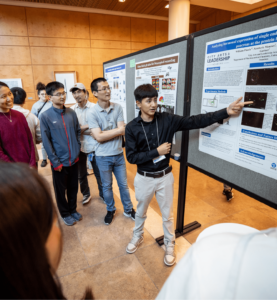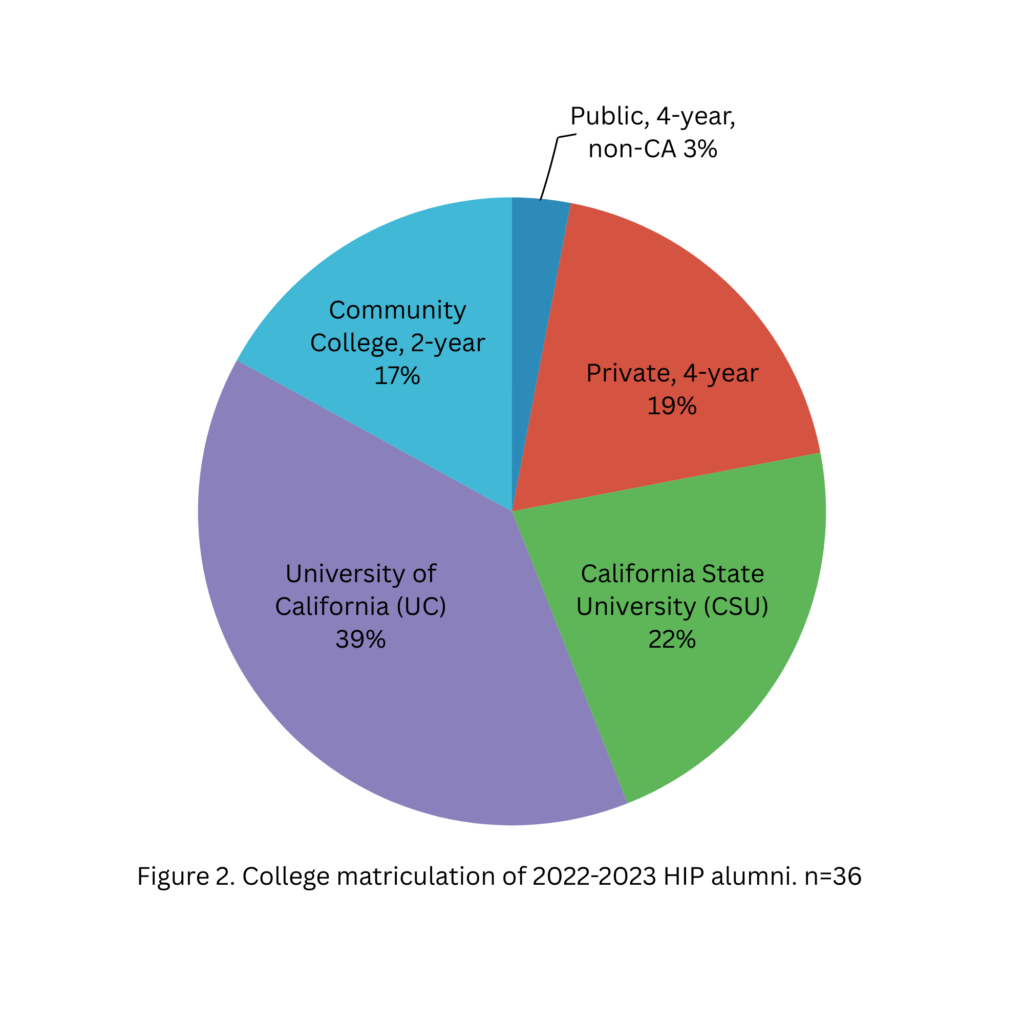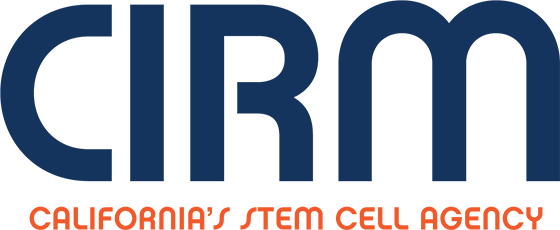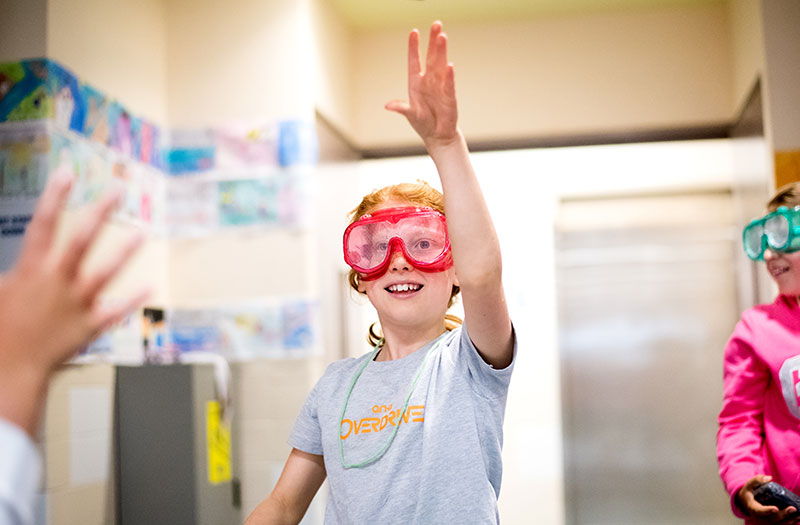
Most high school students spend their summers hanging out with friends, catching up on TV and working part-time jobs…..
SEP’s high school programs are only open to students from SFUSD or SF charter schools
Through SEP’s High School Intern Program, high school students learn how to conduct biomedical research during an 8-week paid summer internship at UC San Francisco. Students are matched with a scientist mentor who guides their learning of science content and skills to complete a unique research project. Learn more below.
Each summer, high school students conduct original research under the direction of a UCSF scientist mentor. This is a rigorous and intense program with just eight weeks for students to complete and present their research projects. Unlike most other high school research programs in the country, acceptance into the High School Intern Program (HIP) is not contingent upon students’ grades, commitments to a career in science, or paths to college. We recruit and encourage students who are low-income and first generation to college to apply.
HIP seeks to support students’ growth and recognition of their own potential by engaging them with authentic science research projects, peer sharing and learning, and individual college counseling. HIP aims to help students develop a sense of belonging in order to broaden their ideas about their own place in college and careers in the biomedical sciences. In order to participate, a student must be a rising senior and attend an SFUSD high school or SF charter school.
Each year, 10 of our high school interns are supported with funding from the California Institute of Regenerative Medicine (CIRM) as part of CIRM’s Summer Program to Accelerate Regenerative Medicine Knowledge (SPARK). An additional 10 students are funded by the NIH National Institute of Neurological Disorders and Stroke.
“The connection I built with my mentor at the HIP encouraged me to pursue college level research and encouraged me to keep going although the field is intimidating.”
“My thinking about college has switched because now I won't settle for less, lots of people see potential in me, so I must see the same potential"High School Interns
A large majority of HIP alumni report that because of their participation in the program, their self-confidence increased, they realized they could be successful in college and STEM, and are interested in pursuing a career in STEM.
HIP interns enroll in and graduate from college at rates that exceed national averages predicted by their parents’ educational attainment with 99% enrolling in either a 2- or 4-year institution in the fall following their high school graduation. As of December 2019, 71% of alumni, who were at least 6-years post-matriculation, had earned degrees or were currently enrolled in post-secondary education.


In recognition of HIP’s success, the program received a Presidential Award for Excellence in Science, Mathematics, and Engineering Mentoring in 2011. You can learn more about HIP and its longitudinal outcomes in this 2020 Journal of STEM Outreach article.
HIP is one of SEP’s longest running programs and is currently funded by the UCSF Chancellor, School of Medicine and Executive Vice Chancellor, the California Institute for Regenerative Medicine, the National Institute of Neurological Disorders and Stroke, the Silicon Valley Community Foundation and the Baskin Family Foundation.


Interested in mentoring a high school student? Click “Mentor Information” to learn more!
Thank you for your interest in SEP’s High School Intern Program!
The application for Summer 2025 is now closed.
See our FAQ tab for more details on eligibility.
Contact: Lakisha.witzel@ucsf.edu | 415.364.8077
Students who are current juniors, and are attending an SFUSD school or SF charter school.
Sunday, March 2nd by 11:59 pm
A completed electronic application form.
Submit all elements of your application using the link above.
We read every application very carefully and use each component of the application to inform our decision. Through the application, tell us about why we should select you. We don’t use grades or academic achievement as an indicator of potential success in this program. Instead, we want to know that you have some interest in science and that this program could help make a difference in your life. The ideal candidate will show us:
We typically interview 50 students for 25 available positions.
We will notify students via email in April.
Generally no. Each summer, different scientists participate as mentors in the High School Intern Program. This means that we don’t usually know which research projects will be available until late spring. Ultimately, the program coordinators make final lab placement decisions based on student interest, schedules, lab locations, and other considerations.
There is a wide variety of research our interns typically do, but you can check out a few past intern research projects here!
This is not advisable. Participation in this program includes working in the laboratory with your mentor, meetings with other interns and program staff, meetings with college counselors, and attending career talks. Though this is not a homework-heavy program, there will be assignments and other independent work required. If an applicant needs to participate in summer school, has extensive family obligations, or needs to work another job, these circumstances will be considered on a case-by-case basis to determine acceptance into the program.
Check out this list we’ve put together!
All of SEP’s programs are offered free-of-charge. To do this work, SEP must annually raise nearly $2 million. Every donation brings us closer to that goal and helps to make this important work possible.

As part of UCSF, SEP is a 501(c)3 non-profit. All donations are tax deductible to the fullest extent of the law. Please let us know if your company participates in a matching gift program so that we can extend the benefit of your generosity.